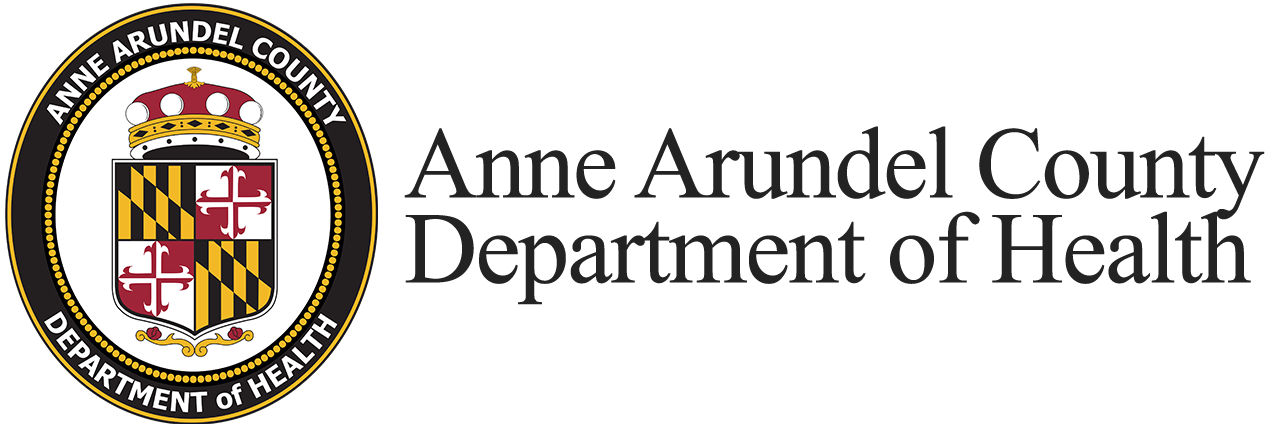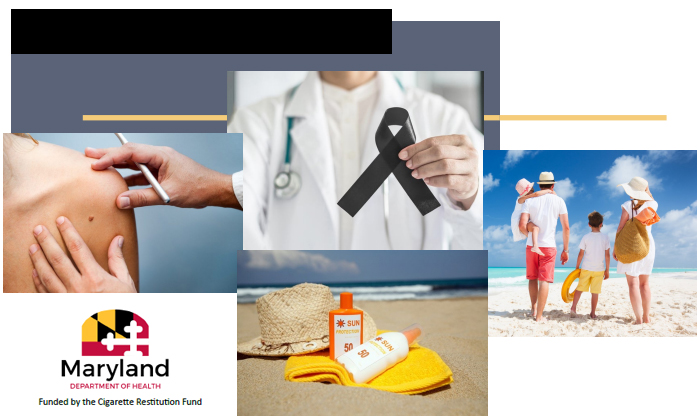Compared to Maryland as a whole, the annual rate of new melanoma diagnoses in Anne Arundel County is 40 percent higher.
For information regarding skin cancer, order a FREE Get Sun Smart Kit online or request one from the Community Education Line at 410-222-7979 or email hdltl@aacounty.org. Include your name and complete address.
What is Skin Cancer?
Skin cancer, the most common form of cancer in the United States, is divided into nonmelanomas and melanomas.
- Nonmelanomas (usually basal cell and squamous cell cancers) are the most common type of skin cancer. They are also the easiest to treat if found in time. These cancers are more common in older people.
- Melanoma is less common than basal cell and squamous cell skin cancers, but it is far more serious. Melanoma is almost always curable in its early stages. If not caught early, it can spread to other parts of the body.
Warning Signs of Skin Cancer
Skin cancer is a serious disease that can cause scarring and even death. Inspect your skin often (at least every three months) and take note of all the spots on your body, from moles to freckles to age spots.
Contact your health care provider if you see any change on one of your spots or you see any of these warning signs:
- A new growth (such as moles, birthmarks or spots)
- Sudden or progressive change in a mole, freckle or birthmark’s appearance
- A sore that doesn’t heal
- A mole, bump or nodule that is scary, lumpy, crusting or bleeding, or takes on an irregular shape
- Swelling, irritation, redness or spread of color into the skin near a mole, birthmark or freckle
- Dark, freckle-like areas under a fingernail or toenail
Nonmelanoma cancers usually affect parts of the body that get the most sun, such as the forehead, nose or ears; but, melanomas can be anywhere on the body, even under the nails or between toes.
Risk Factors for Skin Cancer
There are some risks that you should be aware of for you and your family that you can control. It is important to remember that everyone is at risk for skin cancer regardless of race.
Risk Factors You Can Control
- Ultraviolet (UV) radiation exposure is the main risk factor that causes skin cancer. UV radiation comes from the sun (even on cold or cloudy days), sunlamps and tanning beds. A person’s risk of skin cancer is related to a lifetime exposure to UV radiation. Skin damage happens when there is any change to the color in the skin, including tanning and burning.
- A few bad sunburns can increase a child’s risk for skin cancer later in life.
- Water, snow, sand and concrete can increase the exposure from reflected rays.
Risk Factors You Cannot Change
- Personal past history of skin cancer
- Family history of skin cancer
- Fair skin
- Light-colored hair and eyes
- Men are more likely to have skin cancer than women.
Screening Recommendations for Skin Cancer
It is important to check your skin regularly for signs of skin cancer. For more information on what to look for and screenings, click here.
For a list of free skin cancer screenings sponsored by American Academy of Dermatology, click here.
Sun Safety Recommendations
- Avoid sun midday from 10 a.m. to 2 p.m. when UV rays are strongest.
- Cover up when outside in sunlight by wearing a wide-brimmed hat, long-sleeved shirt and full-length pants. Seek shade on sunny days. Use an umbrella at the beach or pool and take breaks under a tree or other shaded area.
- Use water-resistant broad-spectrum sunscreen with an SPF of 30 or higher 15-30 minutes before going outside daily, even on cloudy days. Remember to reapply sunscreen at least every two hours and right after swimming, sweating or toweling off. Use a lip balm with an SPF of 30 or higher.
- Wear sunglasses with 100 percent UVA and UVB protection. Make sure prescription glasses have UV protection too.
There is no safe tanning. Tanned skin is always a sign of skin damage.
You are exposed to ultraviolet (UV) radiation when you go out in the sun AND if you use an indoor artificial tanning device. UV radiation is known to cause cancer, including melanoma, the deadliest form of skin cancer. From 2017-2021, approximately 243 people in Anne Arundel County were diagnosed with melanoma each year, and from 2017-2021, Anne Arundel County had the eighth-highest rates of melanoma in Maryland.
Tanning, whether using indoor tanning devices or outside in the sun, is largely for cosmetic purposes, and it unnecessarily increases the risk for developing skin cancer.
Here are the facts about tanning:
- Tanned skin is a sign that there has been damage to the skin and to the skin’s DNA. Skin cancer is caused by the cumulative damage to the DNA after long-term, repeated exposure to UV radiation. Studies have shown that exposure to artificial tanning devices induces the same type of DNA damage as exposure to the sun.
- Most artificial tanning devices within a typical 15-30 minute tanning session can give off as much radiation as a person would receive being out at the beach all day! The UV intensity of some high pressure tanning devices can be as much as 10-15 times that of the midday sun.
- Like the sun, tanning devices can damage the skin and the eyes. UV rays cause premature skin wrinkling and can contribute to the development of cataracts.
- Per Maryland Department of Health: It is unlawful for a tanning facility owner, employee, or operator to allow a minor under the age of 18 years to use any tanning device. More information.
- People who first used tanning beds before the age of 35 increase their risk of melanoma by 75%.
- Some people claim that tanning is beneficial because it aids in the production of vitamin D. Research shows that frequent and prolonged exposure to tanning beds is unnecessary for adequate vitamin D production. The amount of UV radiation experienced in a single tanning session is 4.5 to 7 times the amount of radiation needed for vitamin D production. In healthy people with normal digestion, adequate vitamin D levels can be obtained through diet and vitamin supplementation.
- Women who spend more time outdoors tend to use indoor tanning more frequently than those who rarely or never engage in outdoor sun-seeking behaviors. It is important to avoid tanning regardless of the source. When you are outside, be sure to use sunscreen and sunglasses and seek shade whenever possible.
Additional Information
View these websites for more information about skin cancer.



